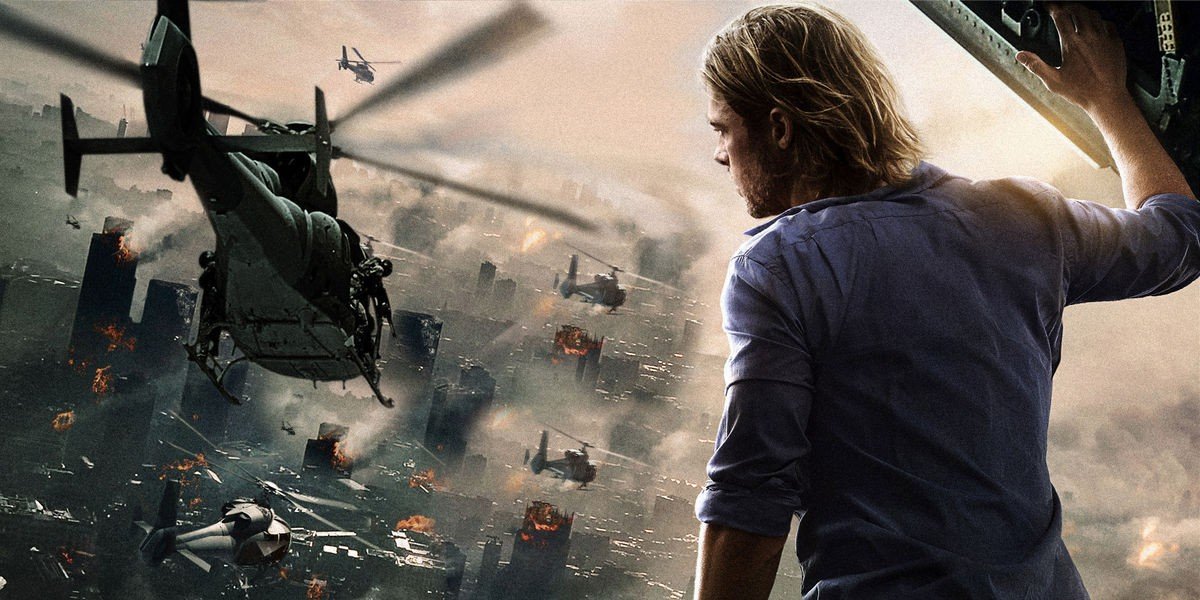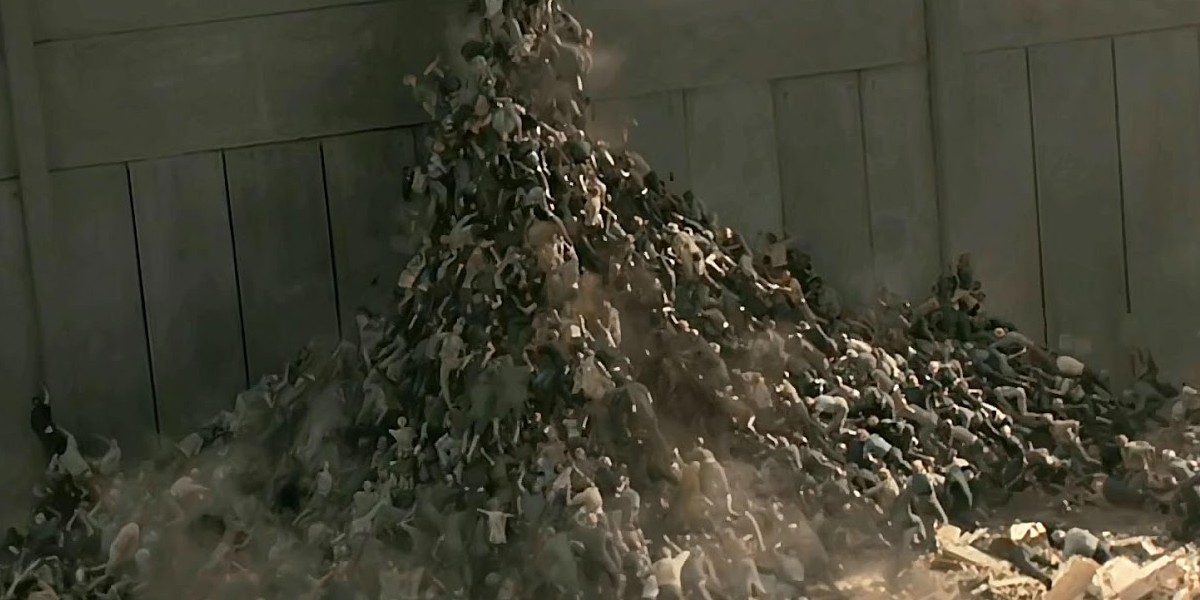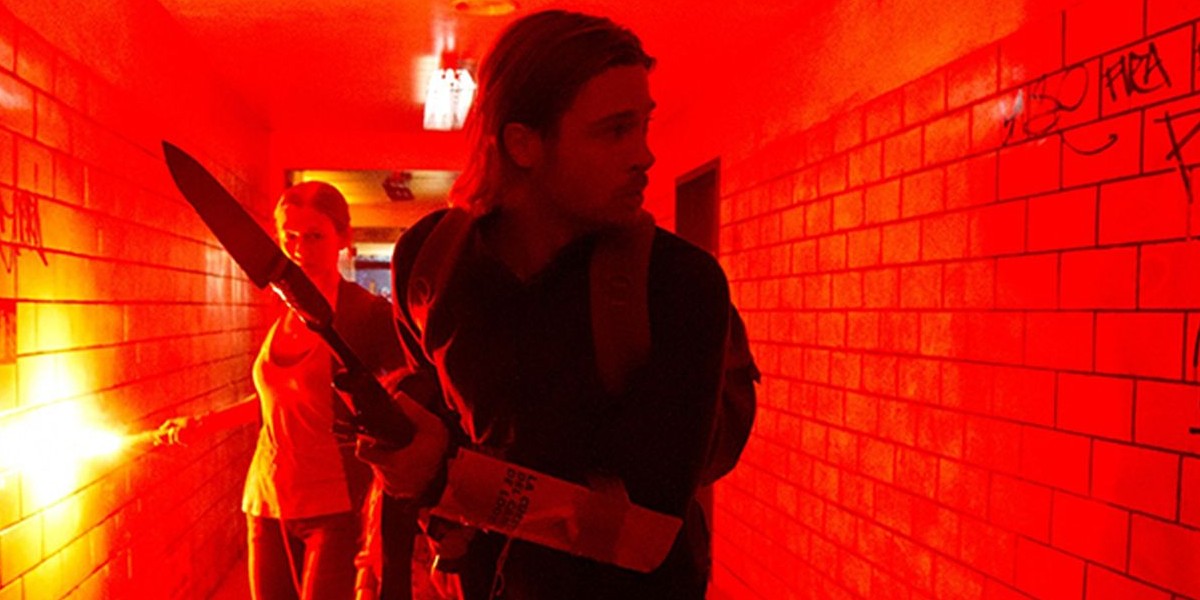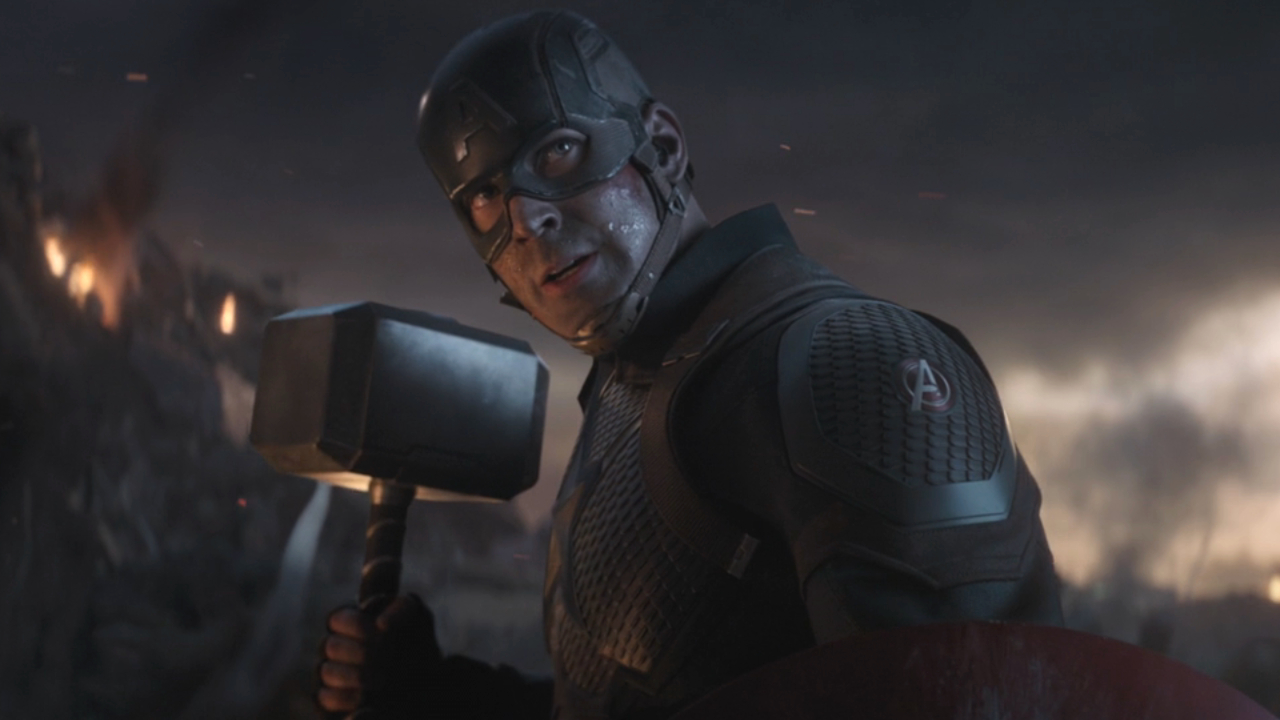World War Z: 6 Major Differences Between The Book And The Movie

True story, I once met World War Z author, Max Brooks, at Comic-Con. I got him to sign his new graphic novel at the time and since he seemed cordial enough, I asked him what he thought about the World War Z movie. He looked up at me while he was signing his autograph and told me that he thought it was a “great movie,” but that it wasn’t his book. And that was my impression, too. The World War Z movie is fantastic, but it’s nothing like the book at all.
Now, this isn’t necessarily a bad thing. There have been quite a few movie adaptations that are very different from their source material. And unlike somebody like Stephen King who can’t stand the Stanley Kubrick version of his book, The Shining, Max Brooks seems pretty cool with the adaptation of World War Z as long as it’s good. But in case you were wondering some of the bigger changes from the novel, I’ve compiled a list of just how far the movie deviated from the amazing book. And while I don’t think this statement is even really necessary given what kind of list this is, but just in case you’ve never seen the movie or read the book, major spoilers up ahead.

There Is No Real Central Character In The Book. Unless You Count The Author Himself
World War Z the movie, if it had followed the book, was always going to be a challenge. That’s because the full title of the novel is World War Z: An Oral History of the Zombie War. And the reason why this is such a challenge to adapt is because the book really is an oral history, meaning that the story is told through multiple sources discussing their role in what happened during (and after) the great Zombie War. In this way, there is no real central character like Brad Pitt in the movie.
Instead, Max Brooks (yes, the author of the novel) is the interviewer and zombie expert since he previously wrote The Zombie Survival Guide, which is an actual book. Because of his expertise in all things zombie, in World War Z, he is also an agent of the United Nations Postwar Commission. So yes, it’s super meta, which is why the screenwriters probably decided to just go with a straightforward narrative about a family trying to escape a bunch of running, ravenous zombies. Oh, and about that.

The Zombies In The Book Don’t Run
One of the defining features in the movie is all the ravenous, speedy zombies clamoring and climbing on top of each other to get to people. In fact, when I initially saw the trailer, this was the first sign I had that the movie would be completely different from the book, since the zombies in the novel act like the typical, shambling zombies you would see in something like in the George Romero movies or The Walking Dead. In an exclusive interview from eatmybrains.com, Max Brooks had this to say:
As far movies, obviously the works of George Romero have inspired me deeply. However, the Return of the Living Dead movies have set the genre back to the dark ages. They cheapen zombies, make them silly and campy. They've done for the living dead what the old Batman TV show did for The Dark Knight.
So speedy zombies? No, sir. No, madam. Not in the book, at least. In the book, Max Brooks is a traditionalist when it comes to his zombies.

There Is No Biting Social Commentary In The Movie
World War Z is a very political book, and if you read it today, you’ll likely find a lot of eerie parallels with modern day times. First, while nobody really knows the true origins of the zombie plague in the novel (though, there have been cave paintings of zombies in this universe), the pandemic makes its first modern appearance in China (welp!) and then gradually spreads itself around the rest of the world. At first, people start just calling it an advanced form of rabies (African rabies, to be specific), and different nations react differently to it. The United States, for example, is woefully unprepared.
Your Daily Blend of Entertainment News
And because it’s an election year in the book (I’m serious), the powers that be don’t want to cause a panic, so it gets a lot worse in the US (double welp!) than in some other nations. And none of this is in the movie! Instead, we’re given a pretty intense action/horror flick that has pretty much nothing to say. There is a scene in the film involving Jerusalem that is kind of in the book, but it’s only skin deep and doesn’t tackle any of the excellent and biting social commentary that Max Brooks presents in his story.

There Is No Vaccine In The Book
A huge portion of the movie is spent trying to develop a vaccine for the zombie apocalypse, and by the end of the film, one has been developed. Huzzah! But the book is very different. It’s not that there isn’t a vaccine in the novel. There is. It’s just that it doesn’t work. In the novel, a vaccine called “Phalanx” is rushed out to the market, and people begin to think that things might turn out alright, but it turns out to be a placebo. At least for the zombie plague, it is.
Phalanx actually worked fine on rabies, as the disease was, as mentioned earlier, thought to be a form of “African Rabies.” So, like the last point, the vaccine in the book is just even more biting social commentary, which is all but lost in the film adaptation.

The War Has Actually Already Ended At The Start Of The Novel
Since the book is an oral history, the events of the narrative have already occurred. This is a stark contrast to the movie, which takes place in present day. This is one of the biggest departures from the novel in that the action is described at great length in the book, and as mentioned earlier, it’s from multiple sources around the world.
Instead, the movie hops from place to place with bigger, and more explosive set pieces. Perhaps if there was that oft-hoped for sequel to the film, we would have gotten something closer to the novel, but the world will probably never know now.

The Book Spends A Great Length Of Time Going Over What Happens After The War
And this was probably the most upsetting aspect for me about the movie, since this was my favorite part about the book. After the war, there are still millions of zombies wandering the world. It’s not as bad as the initial outbreak, and some countries are handling post-war life better than others (like Iceland is packed to the brim with zombies). But following World War Z, zombies could be found all over the place, including underwater and even in the mountains.
This life after the war was really intriguing to me in the novel, and it stinks that the movie decided to keep everything in the present since there is so much that could be mined for a movie that takes place both during and after the carnage. Most zombie movies are either one or the other, but not both.
As mentioned in the intro, I still really enjoy the movie. It’s a really fun, action-packed zombie flick. Still, I can’t help but wonder what a movie that was even closer to the source material would have been like. Oh, well. At least the author isn’t mad, so I guess that’s worth something.

Rich is a Jersey boy, through and through. He graduated from Rutgers University (Go, R.U.!), and thinks the Garden State is the best state in the country. That said, he’ll take Chicago Deep Dish pizza over a New York slice any day of the week. Don’t hate. When he’s not watching his two kids, he’s usually working on a novel, watching vintage movies, or reading some obscure book.
